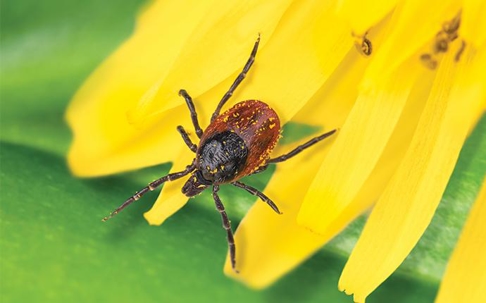Do you have any family members or friends who have Lyme disease? For many people, Lyme disease is no more than a whisper in the wind, a cautionary tale to get them to be more careful around ticks. However, for those of us that have seen the effects of Lyme disease, firsthand, we know ticks and the problems they can cause are no joke. If you don’t know much about Lyme disease and the ticks here in South Carolina, here is everything you need to know.
Why Deer Ticks Are The Most Dangerous
There are more than one species of ticks here in South Carolina, but deer ticks by far are the most dangerous. The main reason for this is that they are the most common vectors for Lyme disease.
If you have been bitten by a tick, the first thing you should do is try to identify it. Keep in mind that if it is already engorged with blood, it will look a bit different. When not full, deer ticks are orange-brown, roughly ⅛” in length, and have eight dark legs. Once full, a deer tick takes on a more reddish-brown color and can expand to nearly five times its normal size.
One misconception is that ticks are the cause of Lyme disease, in truth they are only vectors. What does this mean? It means they carry the parasite that carries the causative agent that causes Lyme disease. Confused yet? Let us explain. Nematode worms are tiny parasitic pests that reside on the bodies of ticks. When ticks open up an animal's or human's skin to feed, these worms can sneak into the open wound. Once inside, these worms can travel throughout their victim's body, including to their brain, releasing harmful pathogens.
These pathogens can lead to several serious problems throughout the human body including neurological conditions, rashes, gastrointestinal problems, cardiac and pulmonary issues, musculoskeletal deterioration, and even reproductive issues.
How Ticks Find Their Hosts
Ticks are not the most mobile of creatures. They do not have wings, cannot crawl very fast, and are unable to jump as fleas can. Because of this, they have to get creative to find their way onto a host. If a tick is already on a host, all they have to do is wait till that host rubs up against another creature to transfer over. When ticks are on the ground, getting onto a host is more difficult. Most commonly, they will find a tall piece of grass or a leaf to climb onto. Once high enough, they will anchor themselves with their back legs and reach out with their front legs to catch hold of a passing person or animal. This is why you are more likely to bring home ticks if you walk through tall grass.
Prevention For Ticks
There are two sides to tick prevention, things you can do to keep ticks away from you, and maintenance that can be done around your yard to reduce tick populations around your property.
Here is everything our experts recommend you do:
- Wear long pants when outside and tuck your pant legs into your socks.
- Opt for lighter-colored clothing to make yourself less visible to ticks and to make ticks more visible to you as they crawl up your body.
- Use an insect repellent with DEET, picaridin, or permethrin.
- Avoid walking through tall grass or dense foliage.
- Keep your grass cut short.
- Invest in professional tick control.
For the absolute best protection for your South Carolina property, let the professionals here at Aiken Pest lend a helping hand. Our team has the experience and equipment needed to quickly and effectively remove and keep ticks away from your yard.

